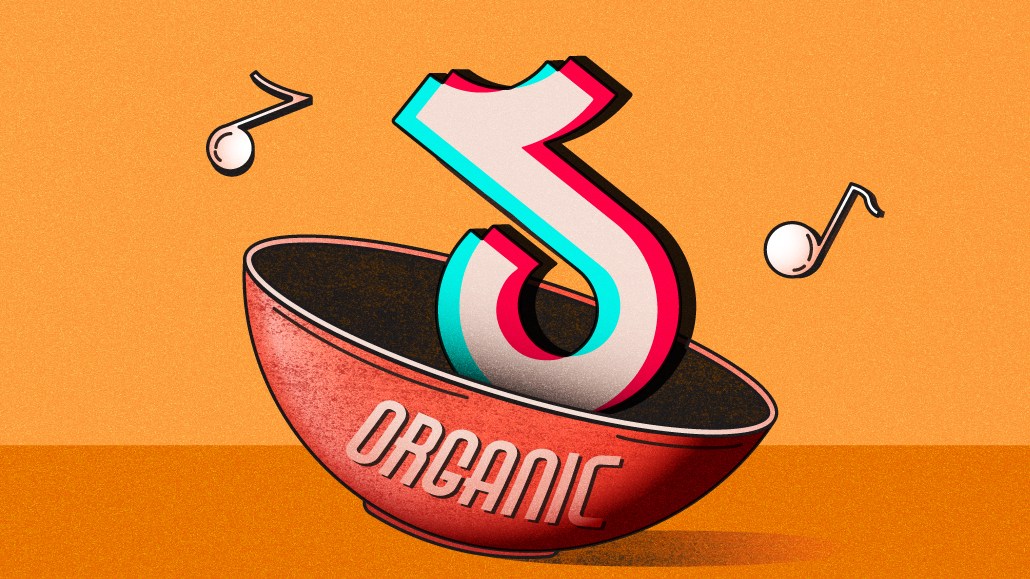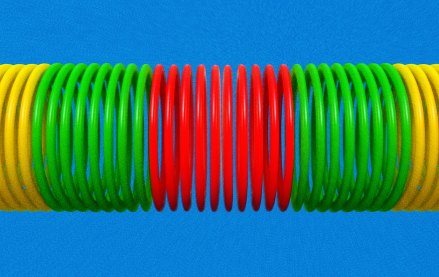Media Buying Briefing: How influencer agencies are adapting to TikTok’s SEO incentives

This Media Buying Briefing covers the latest in agency news and media buying for Digiday+ members and is distributed over email every Monday at 10 a.m. ET. More from the series →
Influencers and the agencies that work with them are increasingly focusing their efforts on search content strategies as TikTok recently launched a new monetization program to reward content matching popular searches. But experts warn that brand safety and authenticity could get tarnished if they do not strike the right balance, despite the platform’s popularity.
With the app’s rising popularity as a search home, especially for Gen Z, agencies expect TikTok’s position as a search engine to grow in influence. More than two in five Americans use TikTok as a search engine — and about one in 10 Gen Z users are more likely to use it than Google as a search engine right now, per an Adobe survey.
“It puts more responsibility on both the brand and agency to be super diligent with how they’re briefing influencers, how they’re conceptualizing campaigns and just try to hold on to authenticity at all costs,” said Jamie Ray, CEO of influencer agency Buttermilk. “Because it does feel like TikTok, in many ways, is set up to gamify the content creation process.”
Even with ongoing talks of a potential ban in the U.S., there has been no slowdown in TikTok’s ad revenue generation — in fact, quite the opposite. TikTok saw a 20% surge in ad spend on the platform the week after the decision came from the House to pursue a ban in March, according to analytics platform Tracer. The platform also saw a 7% lift in CPM from February to March.
TikTok rewards search value
In March, TikTok said it would factor in “search value” as part of its content creators’ rewards on the platform’s new monetization program. As the app continues to prioritize its search optimization and content strategy, it wants to incentivize creators to produce optimized content that matches what its users want — whether that be keywords like “denim” or topics and trends like BookTok and viral foods.
In other words, this is another step in developing TikTok’s search engine optimization.
Desiree Marchetti Russell, director of influencer marketing program strategy at Trade School, said the agency uses precise keywords to support creators in producing captions, text overlays and voiceovers in their briefs for each campaign. “This meticulous approach is aimed at maximizing search visibility across social platforms,” Marchetti Russell said.
Ray at Buttermilk said it makes sense that TikTok is embracing and incentivizing search content, given that Gen Z is already using the platform as a search tool. In particular, he expects certain verticals, like travel or restaurants, to benefit from focusing on search value, and will take advantage of the opportunity to create more engaging content.
“Would you rather search for something on Google and be hit with a wall of text, or would you rather search on an app and have that kind of ‘show don’t tell’ effect where you can try something actually before you buy it?” Ray told Digiday.
Some agencies also anticipate that the tool will influence creators to tap into other niches and types of content they had not considered before. Bea Iturregui, vp of creator and brand partnerships at creator marketing agency Cycle, said the strategy for choosing creators remains the same, but the strategy for what they create has shifted.
“If the audience is searching for ’90s outfits, then the creator may come up with a concept that incorporates ’90s outfits or leans into ’90s nostalgia,” Iturregui said. “TikTok wants to ensure that they have a video for every search a consumer makes, and the easiest way to do that is to incentivize the people who are already creating content on their platform to create more.”
Brand safety and authenticity
As part of the program, TikTok is also testing a new tool in certain regions for creators called Creator Search Insights, which lets creators find trending searches (based on a popularity score) on the app. A creator’s search value increases the more their content aligns with the in-demand search topics to drive engagement.
But using the tool to guide content ideas can be a slippery slope for brands and creators alike.
Besides the risk of diminishing authenticity, Ray also raised the issue of how TikTok will handle content moderation with this search content and rankings. It’s unclear how TikTok will verify or implement safety measures when rewarding high-value content that may pose dangers to users or promote misinformation.
“Google, from a content moderation perspective … they’ve got it down to a T,” Ray said. “What will be interesting from TikTok’s perspective, is that whole aspect of content moderation — and where does the truth lie?”
Ultimately, brands will have to take their budgets and safety considerations into account. It becomes a question of how much money a brand is willing to spend to rank high on a search term, Ray explained. For instance, instead of working with one or a few creators on a particular search query, Buttermilk thinks about focusing on the entire community of a search term, like beauty topics, to produce hundreds of pieces of content around it in order to compete in the list.
How AI and search are changing content
With the spread of generative AI, the broader search landscape is already changing. SEO marketing platform BrightEdge this month released data on Google’s AI-enabled search generative experience, SGE, that is expected to launch soon, though BrightEdge founder Jim Yu said there is no definite timeline.
Based on the company’s data, an estimated 84% of queries on Google Search will have generative AI content in the search result — with health care, e-commerce and B2B technology industries most impacted. This accounts for some $40 billion per year in ad revenue on Google.
With social media, the integration of AI and more searches by users will create a new dataset for AI engines to drive research and content, Yu explained. For example, some platforms like Stack Overflow, a social forum for developers, has a deal with Google to feed into its AI search engine so that people see user-generated content in their results.
“Social networks get surfaced into into the AI engine – so a lot more convergence of search and social [will happen] in this new era,” he explained.
Now imagine if TikTok content started showing up on Google search results — is it a marketer’s dream or worst nightmare?
Color by numbers
Captiv8 published a recap on the top performing brands on social media during the March Madness college basketball tournament, which ranged from sports drinks to Kim Kardashian-founded shapewear. This year was the first time ever that the women’s final game, in which South Carolina defeated Iowa, outdelivered the men’s game, in which Connecticut defeated Purdue. Some highlights:
- In the first five days of the event, CBS, TBS, TNT and TruTV together drew an average of 9 million viewers — a record for the tournament, according to Nielsen ratings. The Iowa-LSU women’s game drew a record 12.3 million viewers, ranking as ESPN’s most watched basketball game ever.
- The #MarchMadness hashtag on TikTok amassed 1 billion views in the past month alone.
- For men’s, Oakland University saw the biggest growth in social media followers, with a 167.72% increase. For women’s, Creighton University saw a 19.19% increase in followers.
- As for top campaigns ranked by total engagement, Powerade came in first in the food and beverage category, with two activations and 16 posts that garnered $28.57 million in earned media value, 3.08% engagement rate and 355.59K in total engagement.
- Skims got top engagement in the consumer/shopping retail category — totaling 16 activations, 32 posts that brought in $5.58 billion in EMV, 18% engagement rate and 813.74K in engagement.
Takeoff & landing
- Online marketplace eBay put its global media business, currently handled by GroupM’s EssenceMediacom which is said to be planning to defend, up for review. The client said it expects to decide by end of second quarter.
- Horizon Media landed media AOR duties, including all planning and activation, for Stoli Group USA, which includes Stoli vodka, as the brand reintroduces itself to the American drinking public.
- Sunglasses brand Pit Viper picked DEP’T as its agency of record for paid media efforts, including search, programmatic, social, affiliates and Shopify platforms, in North America and Australia.
Direct quote
“For me, it’s totally normal that clients would go, ‘Hang on, if you can create the content much better, much faster, much cheaper, I want to benefit from that.’ You’re likely to see many big ad agencies face their Kodak moment. Kodak was making so much money selling photographic film — and despite the fact that they invented digital photography, they went out of business … Any client should expect that the massive efficiencies that can be delivered through gen AI are passed on to them.”
— David Jones, founder and CEO of The Brandtech Group, which has invested heavily in generative AI.
Speed reading
- Ronan Shields and Michael Bürgi broke the news of a complaint logged by data firm Adstra against IPG units Kinesso and Acxiom over improper use of datasets to create a competitive product without permission.
- I wrote about CG Life’s acquisition of digital shop Toolhouse is just the latest indicator of the meteoric growth of the health and sciences sector among media agencies.
- Kristina Monllos looked into the reasons Unilever’s Dove unit committed to NOT using generative AI in its marketing efforts — and how it fits the brand’s ethos.
More in Media Buying

Ad Tech Briefing: Big Tech won 2025 (even when it lost)
How AI, commerce media and scale reshaped ad tech in 2025 to the benefit of Big Tech.

How brands shifted marketing and media strategies through year of tariffs
Marketers share how they navigated the maze of tariffs and regulatory changes this year.

Media Buying Briefing: Omnicom Media execs begin their pitch outreach ahead of an expected new-business glut
Omnicom’s acquisition of IPG is only a few weeks old, but its combined offer to the market will soon be put to the test as it meets with consultants.








